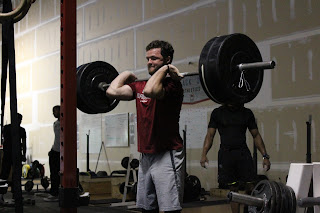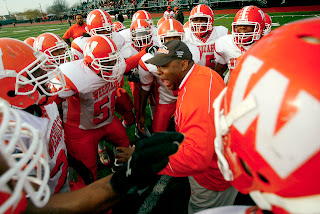How a Phys Ed Program Transformed One School
At Naperville Central High School, west of Chicago, children who are having problems with math or reading go to gym class first. And exercise isn't just restricted to the gym -- there are bikes and balls in the classrooms, and the children are in constant motion.
The results are amazing -- reading scores have doubled, and math scores are up by a factor of 20.
Research shows that after 30 minutes on the treadmill, students solve problems up to 10 percent more effectively.
Keeping kids active at school is a superb way to increase learning, focus and even test results. As many of you reading this have likely experienced, if your mind is feeling cluttered or you’re having a mid-afternoon slump, a brisk walk or a quick workout can give you a renewed sense of clarity and focus.
This is true for kids, too, and the results of implementing a physical activity program at Naperville Central High School are nothing short of astounding.
Students who took part in a dynamic gym class at the beginning of the day had reading scores that nearly doubled, while math scores increased 20-fold. The school even has exercise bikes and balls in classrooms so that kids can stay moving throughout the day.
Although it’s becoming more widely known that physical activity has a direct result on your brain function, this type of phys ed program is still nonexistent at most U.S. schools. This means it’s up to parents to encourage their children to stay active after school and on weekends in order to reap the wonderful brain-boosting benefits that exercise has to offer.
Why Exercise is So Important for Your Child’s Brain
Exercise encourages your brain to work at optimum capacity by causing nerve cells to multiply, strengthening their interconnections and protecting them from damage.
Lab tests on animals have also shown that during exercise their nerve cells release proteins known as neurotrophic factors.
One in particular, called brain-derived neurotrophic factor or BDNF, triggers numerous other chemicals that promote neural health, and has a direct benefit on brain functions, including learning.
A new study published in Neuroscience also revealed that regular exercise not only improved blood flow to the brain, but also helped monkeys learn new tasks twice as quickly as non-exercising monkeys, a benefit the researchers believe would hold true for people too.
Further, exercise provides protective effects to your brain through:
The production of nerve-protecting compounds
Greater blood flow to your brain
Improved development and survival of neurons
Decreased risk of heart and blood vessel diseases
In fact, more than 20 percent of your body’s blood and oxygen go directly to your brain, and exercise increases this flow, not only improving your mood but also your brain power.
Physical activity is not only a boon for brain power, it also helps kids who may be restless or hyperactive, or who have been diagnosed with ADHD. Even emotional disturbances can be improved with exercise, as the activity provides an outlet for their energy and reduces the natural inclination of children to “act out.”
Beyond Gym Class: How to Make Fitness a Regular Part of Your Child’s Life
If your child is fortunate enough to attend a school that values physical fitness and encourages students to become and stay active, this is great. However, most schools in the United States do not require daily P.E. classes, and some are even cutting down on the time children spend at recess.
What this means is that many U.S. kids spend the majority of their day, both at home and at school, sitting … a practice that will not do them any favors on a physical or mental level.
Too much sedentary time is actually one of the forces driving the child obesity epidemic. About 30 percent of U.S. children are now overweight, and, childhood diabetes has increased 10-fold in the last 20 years.
If your child is in this group, it is imperative that you limit their TV, computer and video game time, and replace them with a regular exercise program. Overweight and obese children will need at least 30 minutes of exercise each day, and may benefit from closer to 60 minutes.
Even if your child is not overweight, you should encourage him or her to take part in physically engaging activities after school and on the weekends. There are plenty to choose from, from sports and dance classes to gymnastics, bike riding and playing tag with friends. Allow your child to choose activities that appeal to them, and remember that you need to act as a role model by staying active yourself.
It is important to lead by example. So make sure your kids see you exercising Fortunately, exercise is a habit that can benefit your whole family. If you need tips to get started, please watch my video Primary Principles of Exercise: Aerobic, Interval, Strength, Core.
You can also review our new fitness site, Mercola Peak Fitness, which is a treasure trove of fitness videos and articles by Darin Steen, the personal trainer that heads up our fitness site. It’s a wonderful resource to help you and your children become fitness savvy and make exercise a regular part of your lives.
http://articles.mercola.com/sites/articles/archive/2010/05/04/how-a-phys-ed-program-transformed-one-school.aspx
The results are amazing -- reading scores have doubled, and math scores are up by a factor of 20.
Research shows that after 30 minutes on the treadmill, students solve problems up to 10 percent more effectively.
Keeping kids active at school is a superb way to increase learning, focus and even test results. As many of you reading this have likely experienced, if your mind is feeling cluttered or you’re having a mid-afternoon slump, a brisk walk or a quick workout can give you a renewed sense of clarity and focus.
This is true for kids, too, and the results of implementing a physical activity program at Naperville Central High School are nothing short of astounding.
Students who took part in a dynamic gym class at the beginning of the day had reading scores that nearly doubled, while math scores increased 20-fold. The school even has exercise bikes and balls in classrooms so that kids can stay moving throughout the day.
Although it’s becoming more widely known that physical activity has a direct result on your brain function, this type of phys ed program is still nonexistent at most U.S. schools. This means it’s up to parents to encourage their children to stay active after school and on weekends in order to reap the wonderful brain-boosting benefits that exercise has to offer.
Why Exercise is So Important for Your Child’s Brain
Exercise encourages your brain to work at optimum capacity by causing nerve cells to multiply, strengthening their interconnections and protecting them from damage.
Lab tests on animals have also shown that during exercise their nerve cells release proteins known as neurotrophic factors.
One in particular, called brain-derived neurotrophic factor or BDNF, triggers numerous other chemicals that promote neural health, and has a direct benefit on brain functions, including learning.
A new study published in Neuroscience also revealed that regular exercise not only improved blood flow to the brain, but also helped monkeys learn new tasks twice as quickly as non-exercising monkeys, a benefit the researchers believe would hold true for people too.
Further, exercise provides protective effects to your brain through:
The production of nerve-protecting compounds
Greater blood flow to your brain
Improved development and survival of neurons
Decreased risk of heart and blood vessel diseases
In fact, more than 20 percent of your body’s blood and oxygen go directly to your brain, and exercise increases this flow, not only improving your mood but also your brain power.
Physical activity is not only a boon for brain power, it also helps kids who may be restless or hyperactive, or who have been diagnosed with ADHD. Even emotional disturbances can be improved with exercise, as the activity provides an outlet for their energy and reduces the natural inclination of children to “act out.”
Beyond Gym Class: How to Make Fitness a Regular Part of Your Child’s Life
If your child is fortunate enough to attend a school that values physical fitness and encourages students to become and stay active, this is great. However, most schools in the United States do not require daily P.E. classes, and some are even cutting down on the time children spend at recess.
What this means is that many U.S. kids spend the majority of their day, both at home and at school, sitting … a practice that will not do them any favors on a physical or mental level.
Too much sedentary time is actually one of the forces driving the child obesity epidemic. About 30 percent of U.S. children are now overweight, and, childhood diabetes has increased 10-fold in the last 20 years.
If your child is in this group, it is imperative that you limit their TV, computer and video game time, and replace them with a regular exercise program. Overweight and obese children will need at least 30 minutes of exercise each day, and may benefit from closer to 60 minutes.
Even if your child is not overweight, you should encourage him or her to take part in physically engaging activities after school and on the weekends. There are plenty to choose from, from sports and dance classes to gymnastics, bike riding and playing tag with friends. Allow your child to choose activities that appeal to them, and remember that you need to act as a role model by staying active yourself.
It is important to lead by example. So make sure your kids see you exercising Fortunately, exercise is a habit that can benefit your whole family. If you need tips to get started, please watch my video Primary Principles of Exercise: Aerobic, Interval, Strength, Core.
You can also review our new fitness site, Mercola Peak Fitness, which is a treasure trove of fitness videos and articles by Darin Steen, the personal trainer that heads up our fitness site. It’s a wonderful resource to help you and your children become fitness savvy and make exercise a regular part of your lives.
http://articles.mercola.com/sites/articles/archive/2010/05/04/how-a-phys-ed-program-transformed-one-school.aspx




Hi,
ReplyDeleteI can see that you are putting a lots of efforts into your blog. Keep posting the good work.Some really helpful information in there. Nice to see your site. Thanks!
Personal training programs Naperville